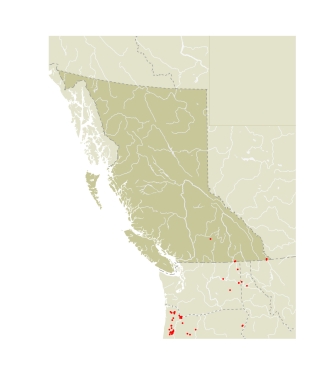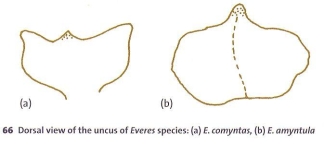The Eastern Tailed Blue is known from only three populations in BC, one in the Flathead drainage, one near Vernon, and another near the mouth of the Pend-d'Oreille River, south of Trail. There are also scattered records in adjacent eastern Washington and the Idaho panhandle. Washington and Oregon authorities (pers. comm.) have speculated that the species was brought in by nursery stock. BC populations, however, are found in natural riparian situations with, in the case of the Flathead population, little or no human disturbance. This would indicate that the species is native to the Pacific Northwest. The isolated populations most likely represent remnants of a much larger preglacial or immediate postglaciaI distribution, similar to the distribution of the Dione Copper in the upper Columbia River drainage.
|
|

